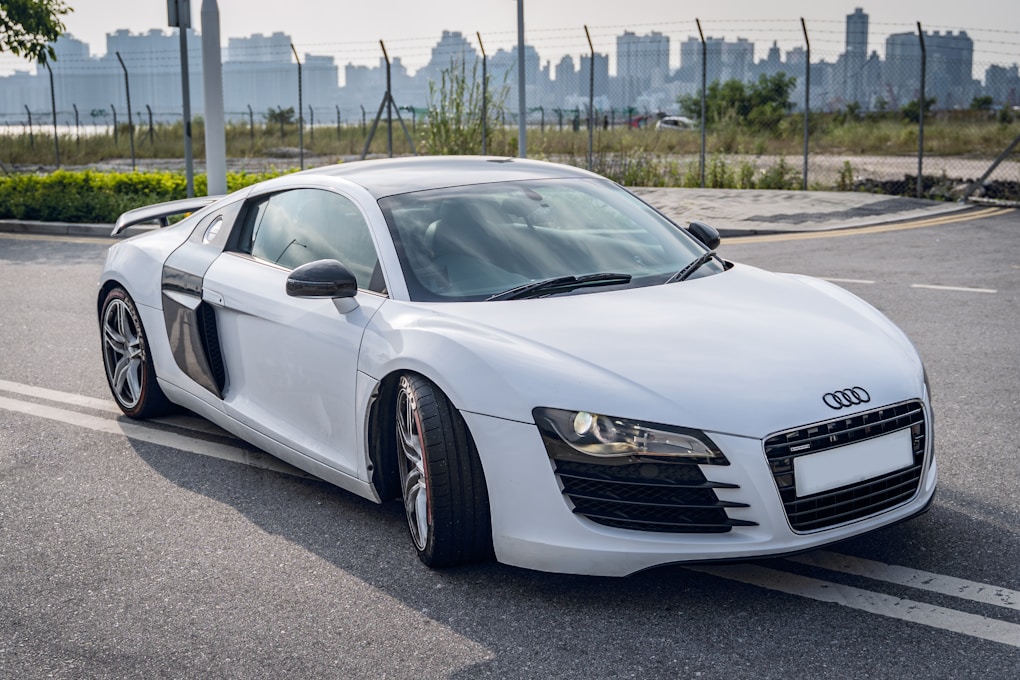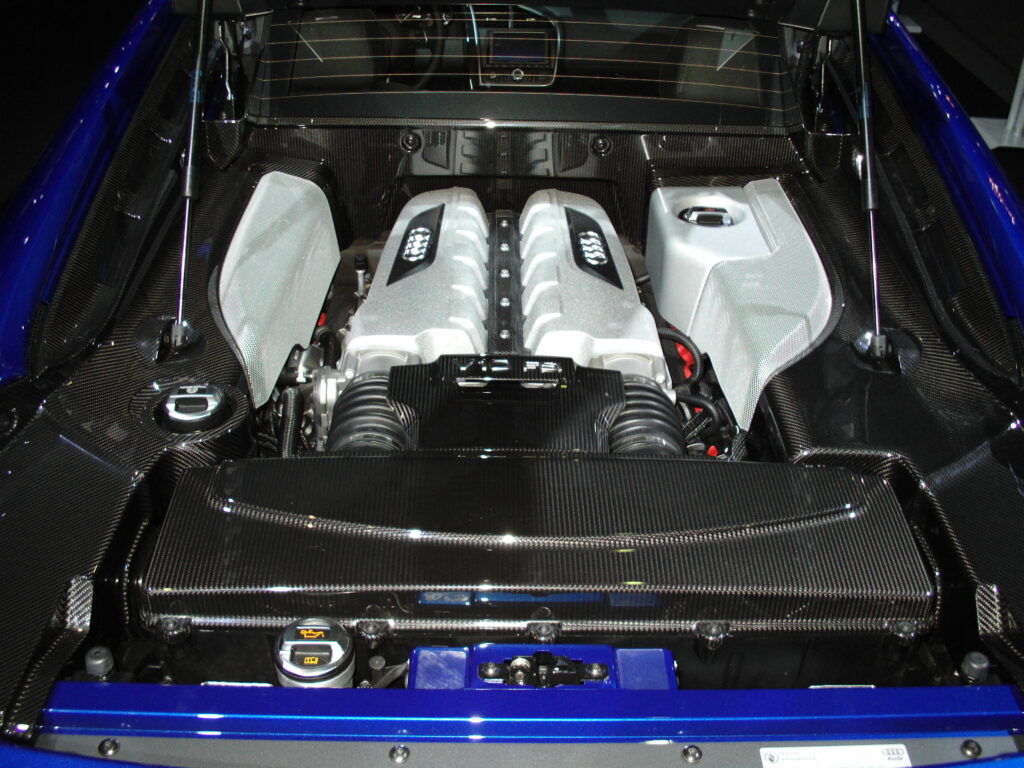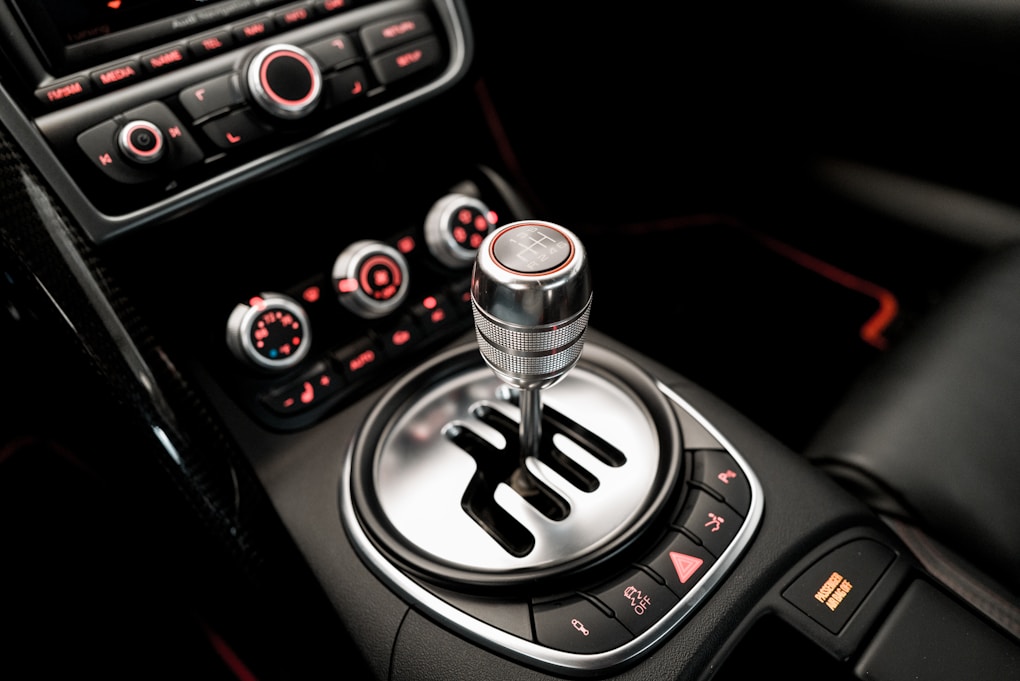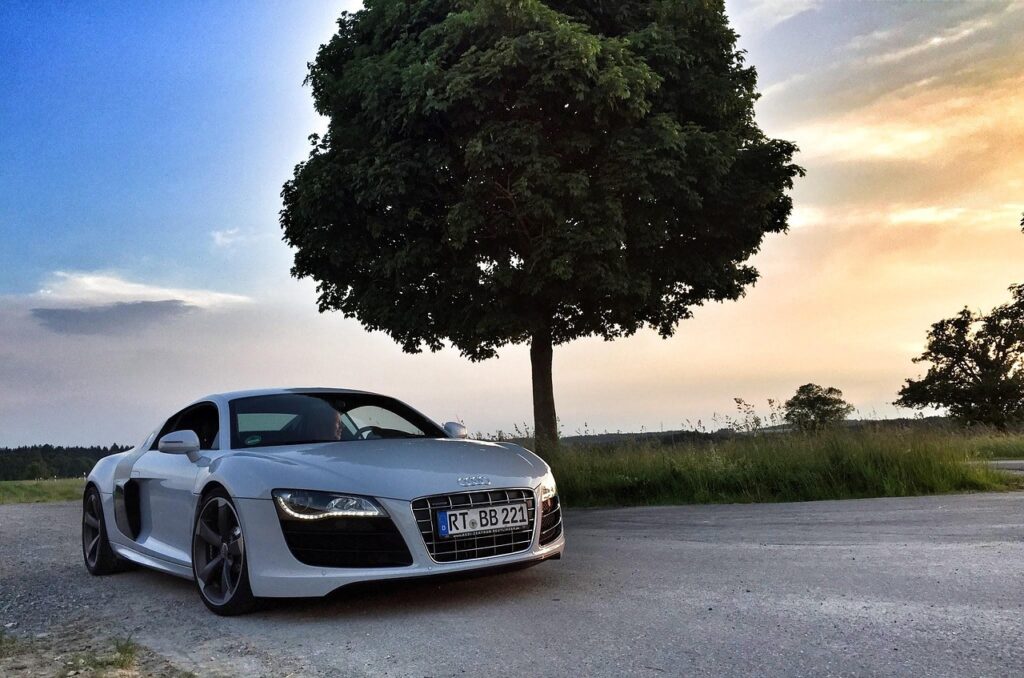The first-generation Audi R8 V10 is defined by the incredible, naturally aspirated engine sitting right behind your head. In a world of silent electric vehicles and muted turbos, this car is a rolling tribute to high-revving, atmospheric power paired with a chassis you can genuinely use every day. We all know it shares some parts with a Lamborghini, but the ownership truths and the stuff that gets argued about late at night on the forums? That is where the real story is. The 5.2L FSI V10’s character, with its sharp throttle response and power that builds all the way to redline, is something special. But ownership has its quirks.
You have to be ready for the infamous “AC bomb.” It’s a known weak spot where the compressor fails, contaminating the entire system with metal bits. On the other hand, the single best fix for the car’s dynamics is a TCU tune for the S-Tronic gearbox (if you don’t splurge a minimum of $10k extra for the 6-speed gated manual), which turns a decent transmission into a great one. This is key, because those S-Tronic cars are the attainable entry point into the V10 club, while the gated manuals are now investment-grade machines.

Putting a Lamborghini engine in an Audi sounds like a cynical marketing ploy. A parts-bin special. But it wasn’t. The mission from Ingolstadt was completely different from what the team at Sant’Agata was doing. They wanted to build a supercar you could take to get groceries. On a rainy Tuesday. That single goal of usability forced a series of smart engineering choices that gave the R8 its unique personality, a character that still sparks debate on Audizine forums to this day.
It all begins with the chassis. Yes, the aluminum space frame is shared tech, but Audi’s version is distinct. The wheelbase is longer than the Gallardo’s, and the track is wider, creating a more stable platform. They tuned the suspension, particularly the optional MagRide system, for a much broader set of conditions than just a perfect racetrack. It was designed for actual roads.
The Quattro all-wheel-drive system is the real masterstroke, though. People hear “Quattro” and picture a nose-heavy sedan plowing through snow with tons of understeer. This isn’t that system.
Not even close.
The viscous-coupling center differential is heavily rear-biased, sending about 85% of the power to the rear wheels in normal driving. You can get on the throttle mid-corner and feel the back end step out just like a proper mid-engine car. The front axle is just there to pull you out of the corner when you get a little too greedy. It’s a safety net, not a buzzkill.
…and then there’s the V10 engine.

The 5.2L V10 is a dry-sump design, and that’s not just a fancy talking point for a brochure. A dry-sump system uses an external reservoir for oil instead of a deep pan at the bottom of the engine.
This allows the entire powerplant to be mounted much lower in the chassis, which significantly drops the car’s center of gravity for better handling. It also guarantees consistent oil pressure during long, high-G corners that could starve a normal wet-sump engine and cause catastrophic failure. It’s the perfect mix of German pragmatism and Italian fire.
Every great car has its well-known flaw, the sort of issue that becomes a rite of passage for owners. The R8 is no different, and its big one is a financial landmine the community has named the “AC bomb.” It’s the kind of problem that feels almost stereotypically German in its execution. The engine is nearly indestructible, the transmission is tough, and the chassis is solid aluminum. But the air conditioning compressor? That component is a ticking clock.

The specific part, a Denso 7SEU17C compressor used across many VW Group cars, has a nasty habit of failing in the R8. The clutch mechanism can come apart, sending a cloud of metal shavings through the entire AC system. When this happens, you can’t just bolt on a new compressor. You have to replace the condenser, receiver/drier, expansion valve, and painstakingly flush every line to get the debris out. If you don’t, the new compressor will die very quickly. A preventative replacement might cost you $1,500.
A repair after it blows up can easily be over $4,000. It makes you paranoid, always listening for a tiny change in sound when the AC kicks on.
Actually, let me rephrase that. It’s not charming, it’s objectively awful. But it’s a known issue. It’s the price of admission. You budget for it, you get it sorted, and then you get to complain about it with other owners.
If you are driving a first-gen R8 V10 with the S-Tronic dual-clutch, you’ll feel a frustrating disconnect. The engine wants to scream to its 8,700 RPM redline, snapping to attention instantly. The gearbox, however, seems to want a moment to consider your request. In automatic mode it’s smooth enough. But when you’re using the paddles and really driving it hard, there’s a softness to the shifts that just doesn’t match the engine’s wild personality. The downshifts, especially, can feel lazy.
This is where a TCU tune comes in.
A Transmission Control Unit tune from a reputable shop like VF Engineering completely rewrites the software for the gearbox. It doesn’t add horsepower. It changes the car’s entire feel. A good tune alters clutch engagement pressures and shift logic, increasing clamping force for quicker, more positive gear changes. The real magic is in manual mode. Downshifts become instant and aggressive, paired with a perfect throttle blip that settles the car on corner entry. It’s the difference between the car allowing a downshift and the car demanding it. It’s the single best bang-for-your-buck mod you can do, making the gearbox finally feel worthy of the engine.

Right now, the R8 market has split into two completely different worlds. You have the gated manual on one side and the S-Tronic on the other. The gated manual cars are no longer just cars. They’re appreciating assets. That slick clink-clank sound of the metal shifter is the sound of money, and if you’ve been watching auction sites, you know the prices are getting crazy. A 2012 V10 with a stick can command anywhere from $10,000 up to $50,000 – $70,000 premium over an identical S-Tronic car. It’s wild.
This situation has created a huge opportunity for real drivers. The S-Tronic cars, especially the 2012-2015 “facelift” models with the improved gearbox, are the performance bargain of the decade. You get 98% of the experience for a fraction of the price.
Then there’s the Audi R8 Gen 2 debate: Plus versus non-Plus.
The V10 Plus gets you more power (610 hp versus 540 hp), carbon-ceramic brakes, and a fixed, passive suspension. On paper, it’s the top dog. But many owners argue the non-Plus is the smarter buy for the road. The standard steel brakes are cheaper to replace, and the standard MagRide suspension is far more comfortable on real-world roads than the stiff setup on the Plus.
Are you really using that extra 70 horsepower on your commute? You end up with a fascinating choice that gets debated constantly online. Do you pay more for the ultimate spec sheet, or save a bundle for the more usable road car?
You can watch a thousand reviews, but none of them capture the actual sensation. You drop into the seat, lower than you think you’ll be. The view forward is panoramic, with the front fenders arching up to perfectly frame the road ahead. You turn the key, and the V10 fires up with a high-pitched bark before settling into a busy, mechanical idle right behind your ears. You don’t just hear the exhaust. You hear the whole machine.

The first time you really open it up on a good road, something just clicks. The steering is light but incredibly precise. The chassis tells you everything that’s happening without feeling nervous. And that sound, that building howl as the needle sweeps past 6,000 RPM, is completely addictive. It’s a noise that gets under your skin. This is where that TCU tune pays off, when you crack off a downshift and the car responds instantly with a bark from the V10. It’s a top-tier automotive moment.
But the most surprising feeling comes after the rush fades. For all its speed and drama, the car is… easy. The controls make sense. The visibility is shockingly good for a mid-engine machine. You can park it. At its core, it’s an Audi. It’s this duality, the exotic powerplant in a pragmatic, usable body, that makes the Audi R8 V10 so special. It’s the supercar that doesn’t ask you to sacrifice everything for performance.
It was, and still is, a brilliant piece of balanced engineering, and even if I’m a Bimmer fanboy, it is for me one of the best cars out there and I hope some day I might be able to afford one.
